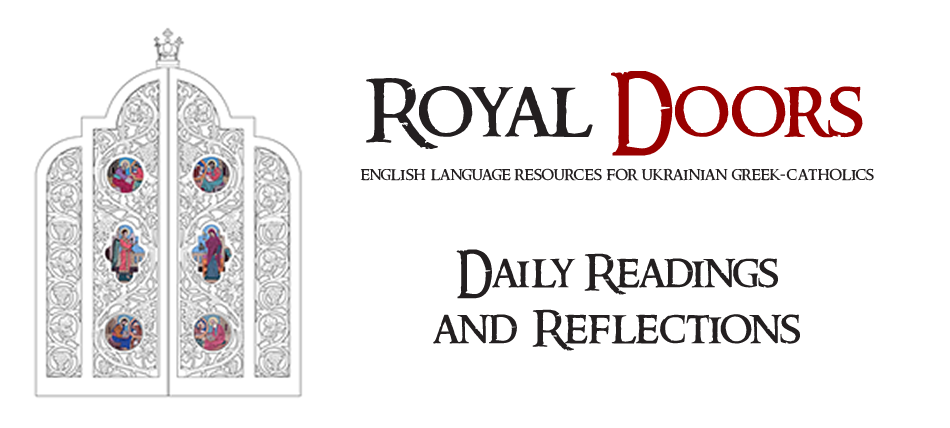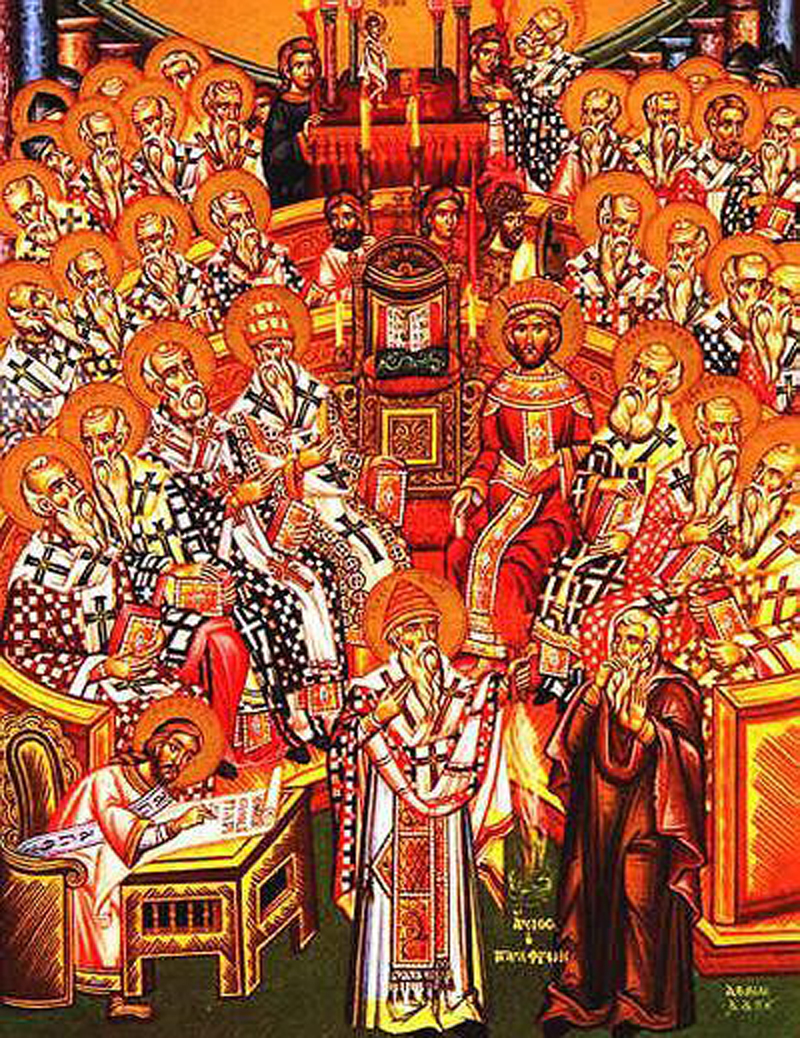“Holy Father, Keep Through Your Name those whom You have given Me, that they may be one as We are” (John 17:11). As His earthly life was approaching its end the Lord Jesus offered this prayer for His disciples. The questions it raises have preoccupied the Church for centuries: how are the Father and the Son “one” and how can the followers of Christ be one “as We are”?
The Unity of God
The distinguishing mark of God’s people throughout the Old Testament is expressed in the Shema, the invocation which might well be called the Jewish creed: “Hear, O Israel: The Lord our God, the Lord is one! You shall love the Lord your God with all your heart, with all your soul, and with all your strength” (Deuteronomy 6:4-5). This passage is recited daily in the morning and evening services of the synagogue and expresses the monotheism which set Jews apart from others peoples in the ancient world. Many devout Jews hope to be able to recite it with their dying breath.
How conflicted must have been those Jews – including Jesus’ own followers – who heard Him say “The works that I do in My Father’s name, they bear witness of Me…I and the Father are one” (John 10: 25, 30). The Jewish leadership saw His claims as blasphemy and condemned Him to death for it. The followers of Jesus accepted it, particularly after His resurrection, without being able to express it with clarity.
The question of how the Lord Jesus could be one with the Father was raised again in the fourth century in the context of a dispute between a charismatic Libyan priest, Arius, and his bishop, Alexander of Alexandria. Arius challenged Alexander for teaching that the Son was eternally begotten of the Father, before earthly time began. Arius countered that “if the Father begat the Son, he that was begotten had a beginning of existence: and from this it is evident, that there was a time when the Son was not. It therefore necessarily follows, that he [the Son] had his substance from nothing” (quoted in the fifth-century Ecclesiastical Histories of Socrates Scholasticus as describing the essence of Arius’ doctrine).
In a local council of his presbyters Alexander deposed Arius and exiled him. Arius, however, had supporters among other bishops and the controversy threatened to disrupt the unity of the Churches in the Roman Empire which had only recently come to look on Christians with favor. This is where the emperor, Constantine the Great, stepped in.
The First Council of Nicaea (325)
For almost twenty years Constantine had been consolidating his position of power in the Roman Empire. At the time of Diocletian (284-305) the empire had been divided into four districts, a move which proved disastrous in the long run. Constantine had defeated all rivals and secured complete control of the empire by the year 324. He was not about to see it plagued by divisions among the Churches.
Constantine invited all the bishops of the empire (the “ecumene”) to a great council to be held at his summer palace in Nicaea. He provided them and their attendant priests and deacons with travel and lodging at imperial expense with the understanding that this gathering was to help unify the Churches of the empire. Bishops, traditionally numbered at 318, came from as far east as Nisibis, on the border of the Persian Empire, and from as far west as Spain and Gaul (France).
The Council’s chief theological task was to express the Churches’ common faith in the relationship between the Father and the Son. The Fathers referred to the Creeds of the various local Churches which were their rule for instruction and baptisms. The bishops ultimately subscribed to a creed based on the baptismal use of the Churches of Palestine. They inserted the term homoousios (one in essence) to describe the relationship of the Father and the Son and appended the following anti-Arian censure: “But those who say: ‘There was a time when He was not;’ and ‘He was not before He was made;’ and ‘He was made out of nothing,’ or ‘He is of another substance’ or ‘essence,’ or ‘The Son of God is created,’ or ‘changeable,’ or ‘alterable’—they are condemned by the holy catholic and apostolic Church.”
The Nicene Creed would be completed at the Second Ecumenical Council and it is that form – with some minor variations – which is used in the Liturgies of all the historic Churches.
The Nicene Council also addressed administrative and disciplinary issues intended to strengthen the unity of the Churches. Among them was the attempt to unify the method of celebrating the resurrection. While most Churches observed Pascha on a Sunday calculated after the spring equinox, some observed it following the computation used to determine the Jewish Passover. The Council endorsed the first of these options and called for all Churches to comply. It also affirmed the practice of not kneeling on Sundays or during the 50 days between Pascha and Pentecost in celebration of the resurrection.
Finally the council recognized an order of precedence among the principal sees in the empire: Rome, Alexandria and Antioch. It also recognized that a special honor be given to the Church of Jerusalem, “the Mother of all the Churches.” This order would be amended at the Council of Chalcedon when Constantinople, the “New Rome,” was given the second place.
Constantine’s Council did not achieve the unity he sought at once. The next two emperors favored Arianism; it would be his third successor, Theodosius I, who affirmed the Nicene decision once and for all in AD 380.
American Protestants seem ambiguous about Arianism according the Protestant group, Ligonier Ministries. According to a recent online survey of 3000 Western Christians which they conducted, almost all evangelicals say they believe in the Trinity (96%) and that Jesus is fully human and fully divine (88%). But nearly a quarter (22%) said God the Father is “more divine” than Jesus, and 9 percent weren’t sure. Further, 16 percent say Jesus was the first creature created by God, while 11 percent were unsure.
Nicaea III (2025)?
On May 26, 2014 the Pope of Rome and the Ecumenical Patriarch met in Jerusalem to commemorate the fiftieth anniversary of the 1964 meeting of their predecessors Paul VI and Athenagoras, the first such encounter in centuries. At that meeting Patriarch Bartholomew proposed that they gather again in 2025 for the 1700th anniversary of the First Council of Nicaea. The patriarch proposed that they meet at the site of the council, now the Turkish city of Iznik.
The patriarch said that he and Pope Francis had “agreed to leave as a legacy to ourselves and to our successors, to celebrate together a gathering in Nicea in 2025, after 17 centuries, the first truly ecumenical synod, where the Creed was first promulgated.” Should such a commemoration bring together representatives of all the historic Churches which accepted this council, that in itself would be a momentous gesture.
At their historic 1964 meeting the first hierarchs of the Catholic and Orthodox Churches prayed that their brotherly gesture, after “so many centuries of silence…may be the sign and prelude of things to come for the glory of God and the enlightenment of His faithful people.” Nicaea in 2025 may outdo them.
Source: Eparchy of Newton

